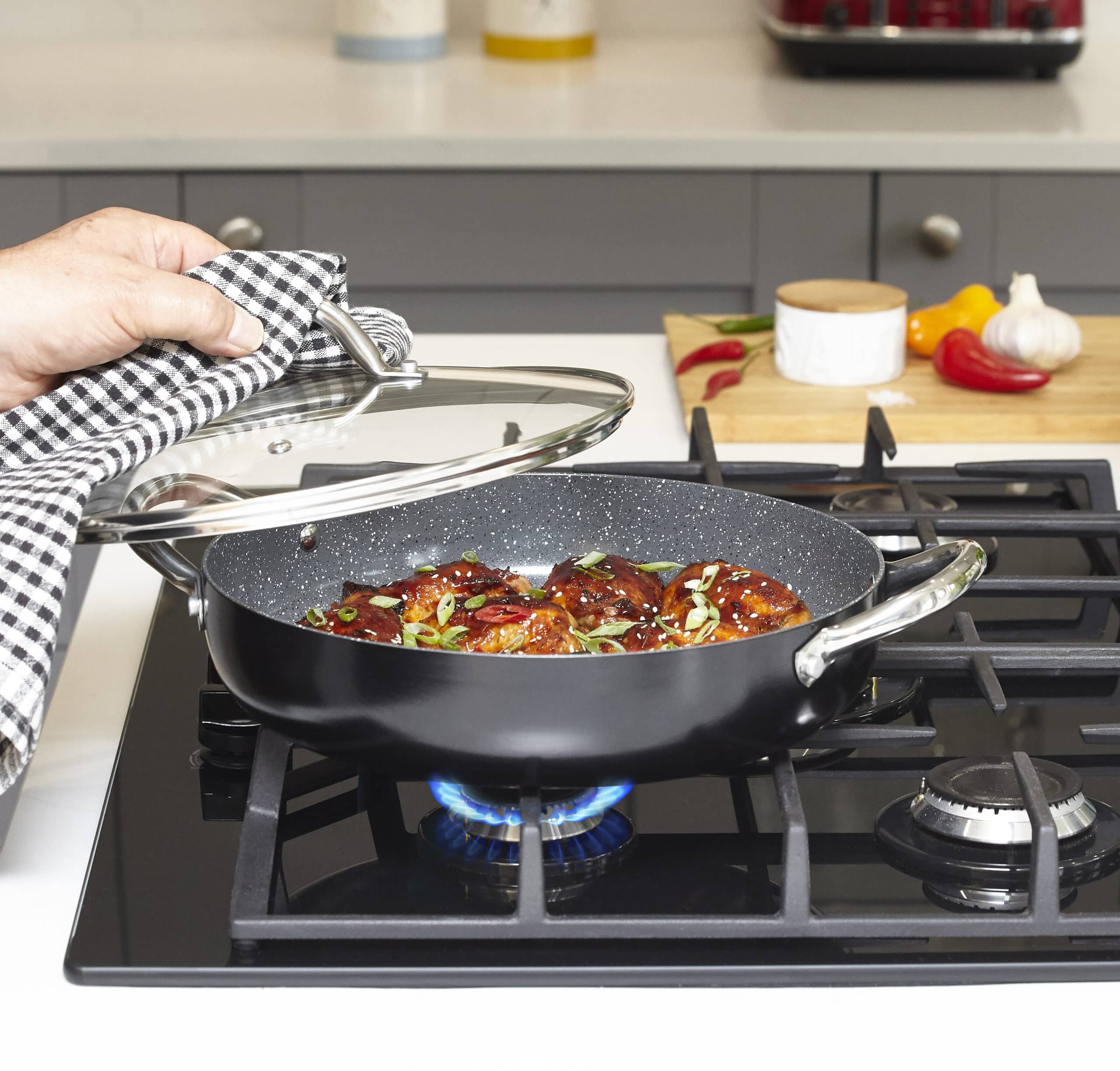In today’s fast-paced world, kitchen appliances have become indispensable tools for modern living. From fridges to microwaves, dishwashers to coffee makers, these appliances make our daily tasks simpler and quicker to accomplish, making our lives easier and leaving time over for the important stuff.
However, it’s important to be aware of the energy consumption of these appliances, especially now in the cost of living crisis, as they can significantly impact our electricity bills and overall environmental footprint. In this blog post, we will not only explore how many watts are used by common appliances but also the factors that influence consumption and how you can increase your kitchen’s energy efficiency.
Average Running Wattage Of Kitchen Appliances
As we’ll discuss below, power consumption varies a lot. So here is a range of how much energy the most common kitchen appliances usually use:
- Blender: 300W – 500W
- Coffee Machine: 800W – 1000W
- Dishwasher: 1200W – 1500W
- Air Fryer: 800W – 1400W
- Espresso Machine: 800W – 1500W
- Fridge: 100W – 400W
- Freezer: 150W – 400W
- Kettle: 1200W – 3000W
- Microwave: 600W – 1700W
- Toaster: 700W – 1000W
- Electric Oven: 1200W – 2500W
- Toaster Oven: 1200W
Power Usage Is Variable
The first thing to know about how much power appliances use, is that it depends. Power usage can vary significantly depending on various factors, including the manufacturer, appliance type, size, and features.
Appliances from different manufacturers can have different energy efficiency ratings, even if they serve the same purpose. For example, a Samsung fridge could consume more energy than an LG refrigerator, or vice versa.
Understanding Wattage And Power Consumption
So, wattage is the most common unit used to measure power consumption, and it’s important to be aware of the wattage ratings of your kitchen appliances. Higher wattage generally indicates higher power consumption. For example, an older model of a microwave may consume more power than a newer, energy-efficient one.
Energy Labels And Ratings
To help consumers make informed decisions, many countries enforce energy labelling regulations. These labels provide valuable information for those who are aiming for energy savings and a lower electric bill.
In the UK, we have an energy label that varies from red to green, which makes the values particularly easy to understand. These electricity usage labels can be used to help you compare different models and choose the most efficient option.
The Highest Energy Consuming Appliances
Certain kitchen appliances are known for their high energy consumption. Sadly, these appliances can’t really be left out of your kitchen, as they’re particularly important! Here are the biggest contributors to your electricity bill:
- Refrigerators: Refrigerators run continuously and are one of the most power-hungry appliances in the kitchen. So while you’ll see above that its wattage is relatively low, because it is constantly running, fridge power consumption is high. Fortunately, a fridge’s energy efficiency is dependent on the manufacturer, and you can find a lower average wattage option.
- Ovens and Stoves: Electric ovens and stoves can consume a substantial amount of energy, especially when operating at high temperatures for extended periods. Gas-powered alternatives tend to be more energy-efficient.
- Dishwashers: Dishwashers offer convenience but can be energy-intensive. Selecting energy-saving modes, running full loads, and opting for air-drying can help reduce energy consumption.
How To Improve Your Household Energy Consumption
Fortunately, there are ways to use less power and reduce your monthly electricity bill. Here are some practical tips to optimise the energy usage of your kitchen appliances:
- Invest in energy-efficient appliances: The best way to lower your energy usage is to start out strong. When purchasing new appliances, look for models with high energy efficiency ratings. They may cost a bit more upfront, but they can save you money in the long run.
- Choose the appropriate size for your needs: Larger appliances generally consume more energy, so if a mini fridge is enough for you, stick with that. Avoid oversized appliances that will only lead to wasted energy.
- Be careful with your refrigerator: Be sure to close the fridge door tightly, don’t leave the door open for an age, set the temperature to the recommended level and allow hot food to cool before placing it inside.
- Be mindful when cooking: Opt for microwave ovens, toaster ovens, or pressure cookers when possible, as they tend to consume less energy than conventional ovens. Use lids while cooking to retain heat and reduce cooking time.
- Dishwashing tips: Run full loads in the dishwasher, use energy-saving or eco-friendly cycles, and consider air-drying dishes instead of using the drying feature.
Conclusion
Understanding the power usage of kitchen appliances is crucial for managing energy consumption and minimising those pesky utility bills. By considering factors such as energy labels and appliance types, and adopting the tips provided above, your energy use will be optimised, bills lower, and your environmental footprint reduced! You can’t go wrong with a little energy efficiency.

